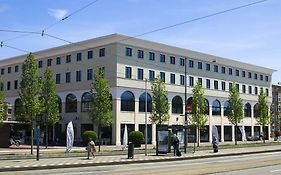The Olympic Stadium Amsterdam is a grand architectural marvel that holds a significant place in the sporting history of Amsterdam, Netherlands. The stadium was built for the 1928 Summer Olympics and has since hosted various sporting events and music concerts, showcasing excellence in both athleticism and live entertainment. Its historical background dates back to the early 20th century when the city aimed to create a world-class sports venue for the Olympics. The stadium's architectural style reflects the iconic Amsterdam School style, characterized by traditionalist and expressionist forms, and its unique features include the striking Olympic rings atop the main entrance, symbolizing the spirit of the Olympic Games. Visitors can explore the rich history of the stadium through guided tours or attend sporting events, cultural festivals, and concerts, immersing themselves in the vibrant energy of this iconic location.
The accessibility and visitor information for Olympic Stadium Amsterdam are quite convenient, with public transportation and parking options available for visitors. The site holds cultural significance as a symbol of Amsterdam's sporting legacy and is a must-visit for sports enthusiasts and history buffs alike. Tourists can explore the stadium's architectural and engineering feats through self-guided tours or engage in interactive activities that allow them to experience the rich history and cultural significance of the location. The stadium also serves as a venue for various cultural events and festivals, providing visitors with an opportunity to engage with the vibrant cultural scene of Amsterdam.
With its historical significance and cultural symbolism, Olympic Stadium Amsterdam provides an immersive experience for tourists seeking to connect with the athletic and cultural heritage of Amsterdam. While exploring the stadium, visitors can gain insights into the city's rich sporting history, architectural achievements, and cultural events, making it an enriching and memorable destination for travelers.










































